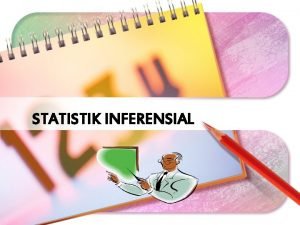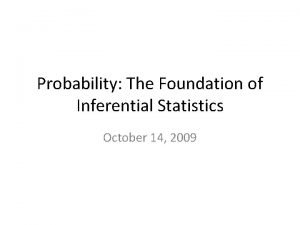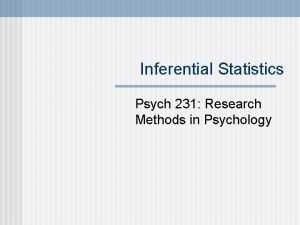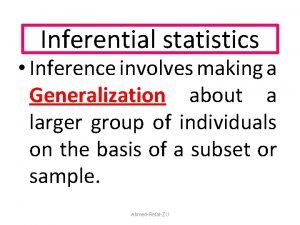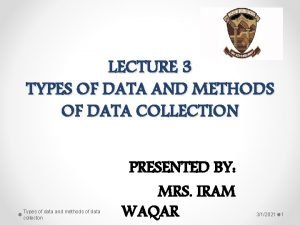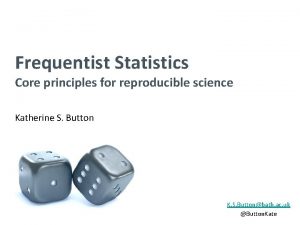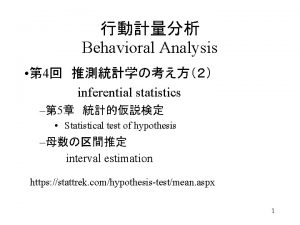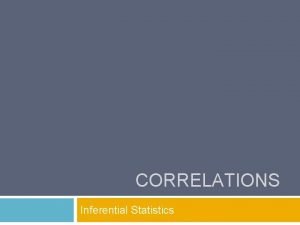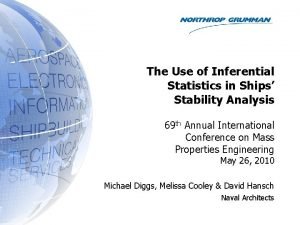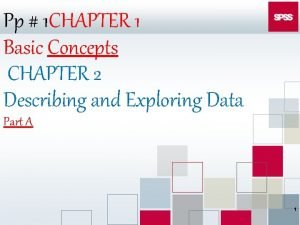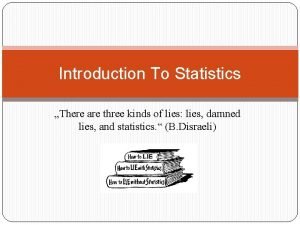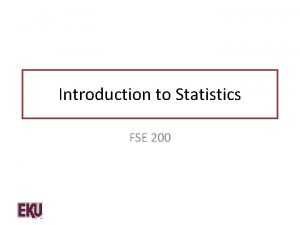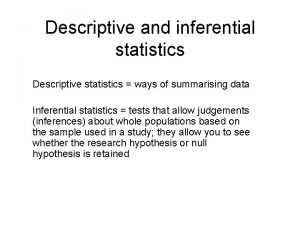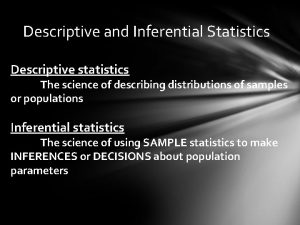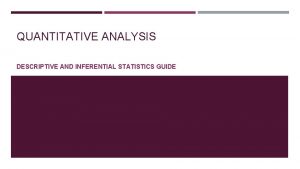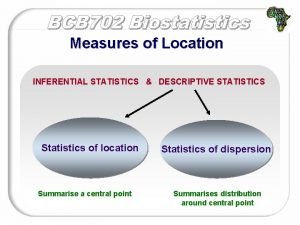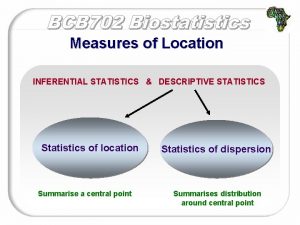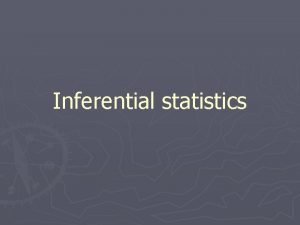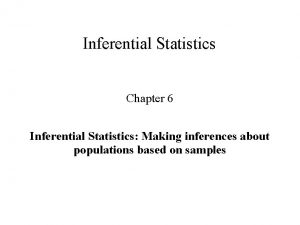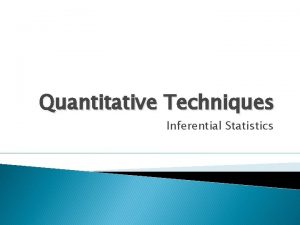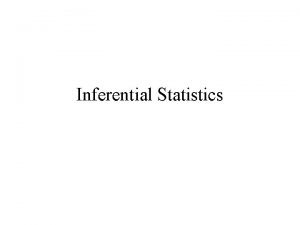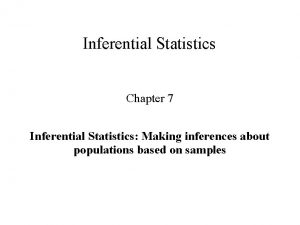Inferential statistics Introduction Descriptive statistics Judgmentsinferences related to














- Slides: 14

Inferential statistics

Introduction Descriptive statistics Judgments/inferences related to the data Inferential statistics

Inferential statistics A. Hypothesis development B. Testing

A. Hypothesis • Statement that relates 2 or > 2 variables Relates only 2 variables – Bivariate (Eg: Carbohydrate rich diet and body weight) Relates more than 2 variables – Multivariate (Eg: Carbohydrate rich diet, Exercise and level of stress on body weight) Two types of hypothesis Experimental hypothesis Statistical hypothesis

• Experimental hypothesis Theoretical relation the researcher knows about the variables Directional (one tailed) – Increased carb. diet leads to increased body wt. Non directional (two tailed)- There is a relation between carb. diet & body wt. The hypothesis could be proved true /false that are represented by statistical analysis • Statistical hypothesis Null hypothesis (Ho) – There is no relation between carb. diet & body wt. Alternative hypothesis (H 1) – There is a relation between carb. diet & body wt.

Hypothesis testing Inferential procedures used to decide whether to accept or reject null hypothesis 8 steps Ø Research Query – State the question of interest Ø Hypothesis – State the experimental and statistical hypothesis Ø Statistical test – Statistical test which will be employed Ø Computation – Calculate the statistical test Ø Critical value – Results and Significance levels Ø Decision – Decide whether to accept or reject Ho Ø Results – Describe the outcome of the statistical test Ø Conclusion – Draw conclusions based on results

Sampling errors Population Sample • Chances that the sample taken from the population does not represent the population (Exceptional cases)

Hypothesis (Ho) There is “NO” relation between carb. diet & gain in body wt. Actual situation Ho True Ho False Accept Ho hypothesis √ Type II error (β) Reject Ho Hypothesis Type 1 error (α) √ Type I error : Of the 10 samples 3 were taken from people receiving steroid treatment Type II error: Of the 10 samples taken 3 were anemic hence no weight gain was observed

Statistical significance • Decide which error must be ruled out (Type I/Type II) • Type I – Set a level of significance α • Level of significance : Amount of error researcher is willing to accept when inferring a data • p-value : Generally accepted is less than 0. 05 % (i. e. out of 100 samples taken 5 could be an error) 5/100 = 0. 05 Lesser the p-value - Greater the significance – Higher reliability

B. Statistical tests Parametric Normally distributed population Non-parametric Skewed population Require data on interval/ratio scale Tests usually based on ranks Mean and standard deviation Median and interquartile range

Statistical tests To compare Parametric tests Non-parametric tests Two independent groups Independent sample t-test Mann-whitney U test Paired samples Paired t test Wilcoxons Signed rank test 3 or more independent variables One way ANOVA Krushal –Wallis test Three or more repeated measures Repeated measures ANOVA Friedman’s Test Quantify association between two variables Pearson’s correlation Spearman’s correlation Two or more independent samples ------- Chi-square test

Summary Inferential statistics Statistical tests Hypothesis development Experimental Null Statistical Alternative Parametric Nonparametric

In Conclusion • Descriptive data is meaningfully concluded after Inferential statistics • Formulating the research hypothesis • Choose an appropriate statistical test • Using the test find significance of the data • Accept of reject hypothesis based on significance • Draw reliable conclusions to the study

Thank u
 Hypothesis setting
Hypothesis setting Ciri ciri one sample t test
Ciri ciri one sample t test Empirical method probability
Empirical method probability Inferential statistics psychology
Inferential statistics psychology Inferential statistics table
Inferential statistics table Rare event rule for inferential statistics
Rare event rule for inferential statistics Inferential statistics
Inferential statistics Inferential statistics
Inferential statistics Inferential testing
Inferential testing Inferential statistics correlation
Inferential statistics correlation Advantages of inferential statistics
Advantages of inferential statistics Characteristics of inferential statistics
Characteristics of inferential statistics Inferential statistics ap psychology
Inferential statistics ap psychology Inferential statistics sample
Inferential statistics sample Characteristics of inferential statistics
Characteristics of inferential statistics

